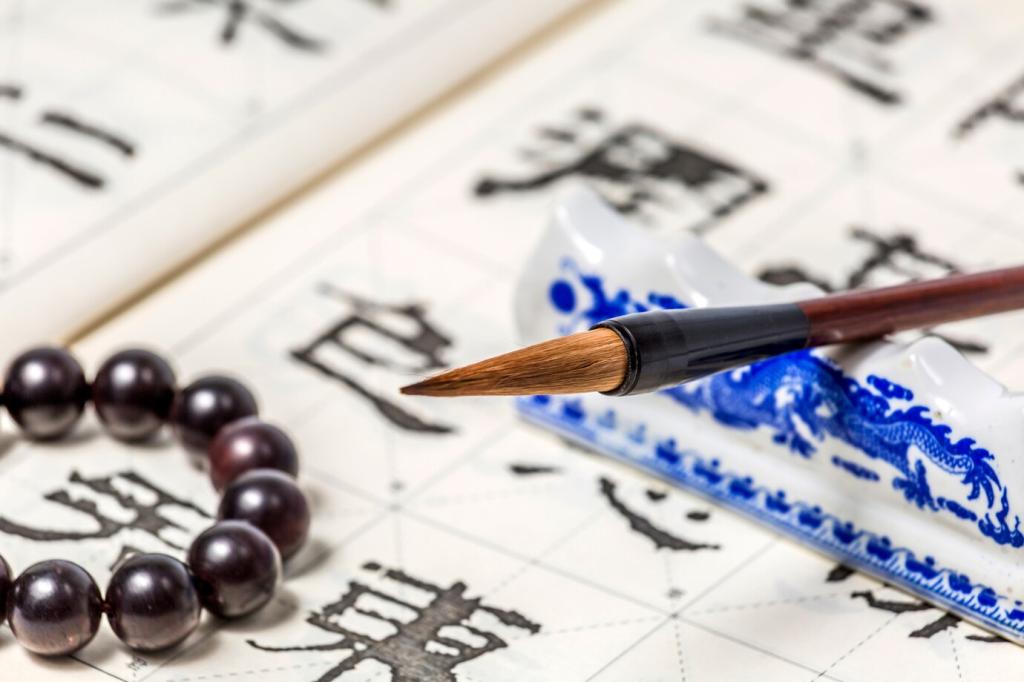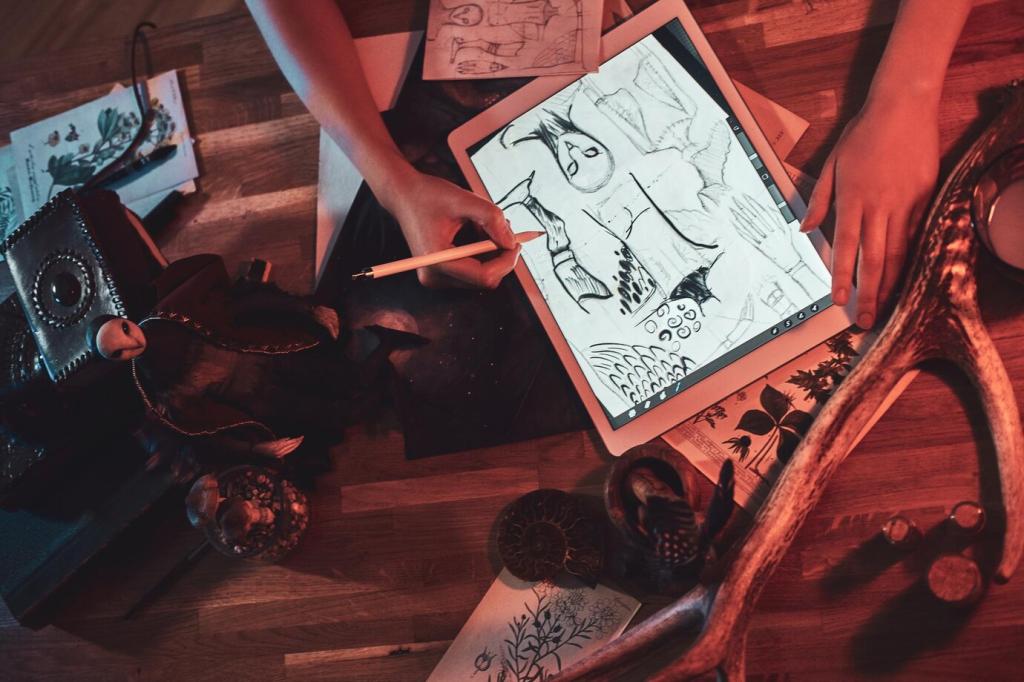Tools of the Skald: Pens, Blades, and Surfaces
Choose broad-edge nibs at moderate widths to celebrate angularity, then mix in a flexible nib for mythic flourishes. Practice consistent pen angles so diagonals sing without muddy joins or slippage.
Tools of the Skald: Pens, Blades, and Surfaces
Use carbon-rich black for crisp rune-inspired forms, then layer gray washes reminiscent of sea mist over headlands. Waterproof inks help build textures; a hint of walnut ink introduces warmth without glare.
Tools of the Skald: Pens, Blades, and Surfaces
Cold-press papers support toothy strokes that recall weathered runestones. For formal pieces, smooth cotton rag ensures clean edges. Always test feathering, as tight counters can drown if fibers drink greedily.
Tools of the Skald: Pens, Blades, and Surfaces
Lorem ipsum dolor sit amet, consectetur adipiscing elit. Ut elit tellus, luctus nec ullamcorper mattis, pulvinar dapibus leo.




